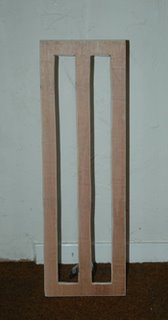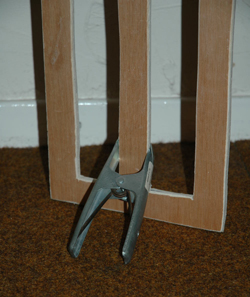It’s been suggested in some quarters that we need to structure the practice sessions in some way. I’m still of the opinion that we should still keep it loose for a couple of weeks, but maybe with more emphasis on the bowlers getting the opportunity to bowl more? I’ve tried to figure out a way of rotating the bowling and batting, but there always ends up a couple of people wicket keeping who are not necessarily the wicket keepers. So unless someone else comes up with something I reckon we should keep it fun and loose. If you’re one of the bowlers take it upon yourself to do as much as you wish. That then leaves openings for Tom, Mark, Naughty and Steve Bone to concentrate on batting and becoming the key Batsman unless of course they’re still up for other duties? But I’m of the opinion people now need to take their places within the team and start to specialise
The situation seems to me to be this – All of us have to bat. There’s four people that have the potential to specialise in batting as they’ve not yet indicated they feel they have the potential (or willing to train) to be Bowlers or Wicket Keepers. As far as I’m concerned I’d like for these people to become specialists in batting –
Tom, Naughty, Mark and Steve – Specialist Batsmen
Richard (AR) and Alex (AR) – Specialist Wicket Keepers
Dave – Specialist Leg Spin Bowler
Thomas (AR) and Rod (AR) Specialist Fast swing bowlers
Simon (AR), Alex and Badger (AR) Specialist Fast Seam bowlers
Those that have (AR) after their names, seem to me to be good all rounders in that they can bat pretty well too!
Match Rules
It looks as though this coming weekend we may have our best turnout yet with the potential for 13 blokes turning up. If it turns out that we do have 10 or 12 we could aim to play some of the ECB rules for indoor cricket.
Here’s some of the rules in brief. We’ll leave the byes and leg byes. Wides we’ll give a point to the batting team.
There’s some white boards, so I’ll try and remember to take a pen and we’ll keep scores. The fifth or sixth man from the batting team can act as umpire
· 12 x 6 ball overs – maximum of 3 overs per bloke
· 6 Two batsmen shall be at the wicket at all times during aninnings. In the event of a team losing five wickets withinthe permitted 12 overs, the last man shall continuebatting with the fifth man out remaining at the wicket asa non-striker.
· When a batsman reaches or passes a personal total of25 he shall retire, but may return to the crease on thedeparture of the fifth batsman. Retired batsmen mustreturn in order of their retirement and take the place ofthe retiring or dismissed batsman. Two 'live' batsmenshall be at the wicket until such time as the fifth wickethas fallen. The batsman shall retire again when he scoresan additional 25 runs on his return to the crease unlesshe is the last remaining batsman, in which case he cancomplete his innings.
· A ball struck to hit the boundary wall behind the bowlerwithout touching the floor or any other wall or ceilingshall count boundary 6 runs. If, however, the ball touchesthe floor but does not touch any of the other walls or theceiling and hits the boundary wall, then it shall count asboundary 4 runs.
· Before the toss, the umpires shall agree with bothcaptains the exact interpretation of 'boundary wall','ceiling', 'side wall' and 'back wall'.
· A ball struck to hit the ceiling or one or more of the sideor back walls shall count 1 run, even if the ballsubsequently hits the boundary wall in which case itremains in play.
· 2 additional runs shall be scored if the batsmen complete a run (if the ball is struck to hit the ceiling or side or back wall and a batsman is then run out1 run shall be scored).
· 2 runs shall be scored if the striker plays the ball and itdoes not hit a wall and the batsmen complete a run.
· Methods of dismissalApart from the normal methods of dismissal contained inthe Laws of Cricket, the following variations shall apply:
· The batsman shall be caught out by a fieldsman after theball has hit the ceiling, the netting or any wall exceptdirectly from the boundary wall, provided the ball has nottouched the floor.
· The last not-out batsman shall be given out if the nonstrikerrunning with him is given out.
· The batsman or the non-striker shall be given not out ifthe ball rebounds from a wall or ceiling and hits a wicketwithout being touched by a fieldsman.
Net News
Other news – I went over to the hall tonight to see if the caretaker had managed to get that pole out of the nets that seemed to be preventing us from pulling the nets out fully. He’d forgotten, so I offered to give him a hand with it and we got it sorted tonight using a ladder, so hopefully on Saturday they come out all the way.
Stump news
It looks as though we may have 4 sets of ‘Stumps’ I’ve designed a new type which will fall over rather than disintegrate……
At the last mpafirsteleven some of the fast bowlers smashed the stumps, so I’ve been thinking what can we do on the cheap to replace them that’ll work and possibly not break so readily. Yesterday I got some plywood 12mm for nothing and the id
 ea was to cut these into stump shapes and see if that’s any stronger? The idea being that once cut these would somehow be slotted into a chunky base, much the same as the old style that have been broken. The idea being as it’s plywood it should be stronger than straight forward wood? So with drills and an electric saw Joe (My 5 year old) and me set to it.
ea was to cut these into stump shapes and see if that’s any stronger? The idea being that once cut these would somehow be slotted into a chunky base, much the same as the old style that have been broken. The idea being as it’s plywood it should be stronger than straight forward wood? So with drills and an electric saw Joe (My 5 year old) and me set to it. 
This is what we came up with, it approximates the size of real stumps and is basically just a target at which to aim the ball or defend depending on what you’re doing. We’ll paint them white before the practice.
Giving it some thought later on as to how to make the things stand up, but then not be ridged to the point where if they’re hit by a fast ball they’re not going to give at I realised they need to be so that as soon as they’re hit they fall over or at least give.
This is the solution I came up with – market clamps see below. They’re light and strong and should come away from the stumps if hit (Even if soft) so in theory not be so susceptible to be being broken?
They’re strong enough to hold the stumps upright and offer an easy solution to the problem. So we’ll give these a go?
Training
So now my backs a little better, I’ll start training again, but this time not over-do it
Having praqctice matches is a really good way to play under pressure. You might want to think about giving the batsmen a set time at the crease to give them more practice.
ReplyDeleteDave,
ReplyDeleteOur practice sessions are two hours long, we tend to do a bit of warming up together at the start and then some bowling and batting all swapping around in an informal manner. We do that for the first hour and then the 2nd hour we've been playing each person is in for an over and has to get as many points in the over, with the emphasis being to keep the ball low so as not to get caught out. This weekend we were going to try and use the system of 'Staying at the crease for a maximum of 25 and then declaring' approach. What we're going to be doing differently is have a man at both ends and have the opportunity to run between ends, this way throwing, wicket keeping, fielding and sprinting become issues and the neccesity for the batsmen to communicate affectively so as not to get stumped/run out. Previously we've had just one batsman in at any time and the objectives were minimal in that it was only batting for points, bowling and catching. Watach the blog and you'll see how we got on in my after practice report!
Dave